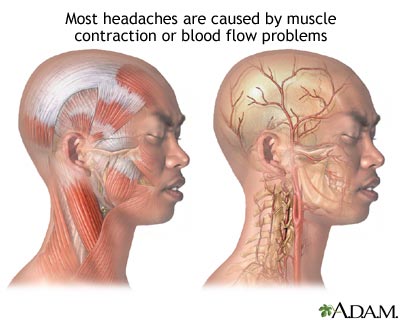How are cluster headaches diagnosed?
The diagnosis of cluster headache is made by taking the patient's history. The description of the pain and it's clock-like recurrence is usually enough to make the diagnosis.
If examined in the midst of an attack, the patient usually is in a painful crisis and may have the eye and nose watering as described previously. If the patient is seen when the pain is not present, the physical examination is normal and the diagnosis again depends upon the history.
How are cluster headaches treated?
Cluster headaches may be very difficult to treat, and it make take trial and error to find the specific treatment regimen that will work for each patient. Since the headache recurs daily, there are two treatment needs. The pain of the first episode needs to be controlled , and additional headaches need to be prevented.
Initial treatment options may include the following:
- inhalation of high concentrations of oxygen (though this will not work if the headache is well established);
- injection of tryptan medications, for example, sumatriptan (Imitrex),zolmitriptan (Zomig), and rizatriptan(Maxalt) which are commonly used for migraine treatments as well;
- injection of lidocaine, a local anesthetic, into the nostril;
- dihydroergotamine (DHE, Migranal), a medication that causes blood vessels to constrict;
- caffeine
Prevention of the next cluster headache may include the following:
- calcium channel blockers [for example, verapamil (Calan, Verelan, Verelan PM, Isoptin, Covera-HS), diltiazem (Cardizem, Dilacor, Tiazac)]
- prednisone (Deltasone, Liquid Pred)
- antidepressant medications
- lithium (Eskalith, Lithobid)
- valproic acid, divalproex (Depakote, Depakote ER, Depakene, Depacon), andtopiramate (Topamax) (often used for seizure control)
